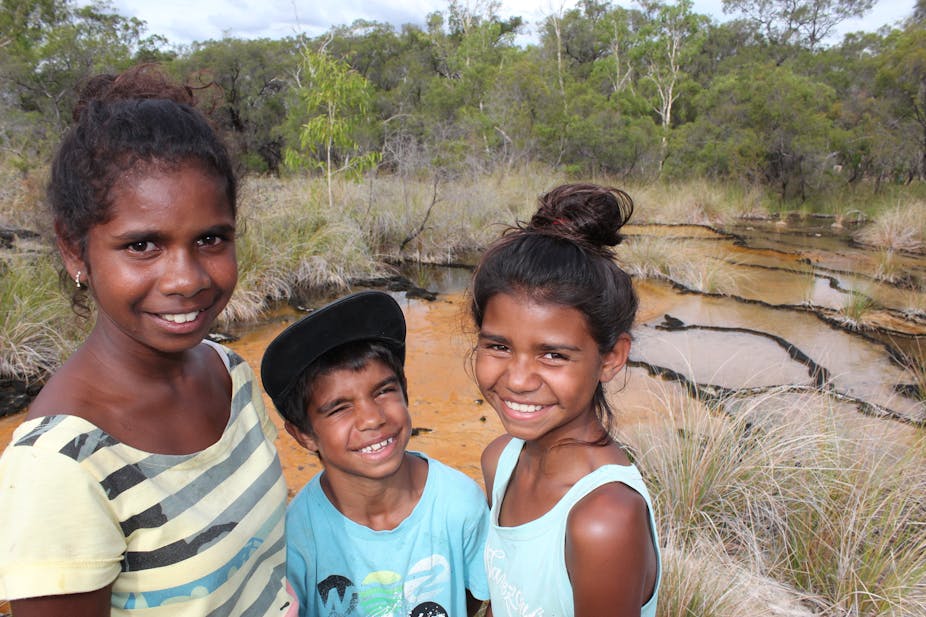Results from the latest Program for International Student Assessment (PISA) show that the gap between Indigenous and non-Indigenous students has remained the same for the last decade. PISA 2012: How Australia measures up shows that Indigenous 15-year-olds remain about two-and-a-half years behind their non-Indigenous peers in schooling. These troubling results yet again stress the importance of needs-based funding.
A persistent gap
In recent years, Australian governments have largely adopted a bipartisan approach to “Closing the Gap” in outcomes, including in education, between Indigenous and non-Indigenous Australians. The Closing the Gap agenda of the Rudd and Gillard governments has similarities with the “Overcoming Indigenous Disadvantage” approach of the Howard government.
Of particular interest to governments have been strategies to bridge gaps in literacy and numeracy. This was illustrated by the Howard government’s National Indigenous English Literacy and Numeracy Strategy in the early 2000s, roughly at the same time as the 2012 PISA cohort of 15-year-olds started their schooling.
Despite this and a raft of other initiatives in Indigenous education, and Indigenous affairs more broadly, performance data across a range of sources point to little gain or “mixed results” at best. Audits like the NSW auditor-general’s 2011 Two Ways Together report, the Victorian auditor-general’s 2011 Indigenous Education Strategies for Government Schools report and the Commonwealth Department of Finance’s 2010 Strategic Review of Indigenous Expenditure report indicate that Indigenous programs have failed to achieve their objectives.
Indigenous disadvantage
We need to understand these results within a wider frame of socioeconomic and geographical disadvantage. PISA data in Australia show that students in regional and remote areas generally perform significantly more poorly than students in urban areas. Regional and remote areas are where two-thirds of Australia’s Indigenous students live.
The data also show that students from lower socioeconomic backgrounds generally perform more poorly than students from higher socioeconomic backgrounds. Census and other data show that Indigenous households are more likely to earn less, live in overcrowded housing and live in low socioeconomic areas.
The 2012 PISA survey shows Indigenous young people are more likely than non-Indigenous students to identify family demands and other problems impacting on the time they spend on school work. This highlights the particular demands that Indigenous young people typically face as members of relatively larger, younger and extended families living on smaller incomes and in overcrowded homes.
So how do we turn these results around?
“Top down” public investment needs to empower “ground up” action. This should take the form of early intervention literacy and numeracy programs, teacher quality improvement and personalised learning support.
High-needs learners often require additional and personalised one-on-one learning support. Many Indigenous children come from homes that do not speak Standard Australian English, so often an instant “catch-up” has to be made in the early school years.
School improvement efforts to personalise learning and remove barriers to learning are key challenges facing teachers and principals. Within Indigenous contexts, school reform needs to address the added dimensions of teacher cultural competency and tailored student support services.
Teacher quality will mean greater attention to the systematic monitoring and assessment of student performance. This can be enabled by robust and deep personalised learning planning processes.
Similarly, assessment and pedagogy require greater attention. Adopting a “growth mindset” in assessment could be highly appropriate to Indigenous contexts (think “personal best” rather than “world records”). The same goes for ensuring that pedagogy is targeted toward student-centred learning as opposed to the flawed assumption that all children learn the same from the same instruction.
On the positive side, the PISA survey shows a high degree of “personal responsibility” and appreciation of the importance of science, maths and literacy among Indigenous young people. The data also show, however, that Indigenous students are less likely to be confident about mathematics and maths testing.
These latest PISA results indicate that while Indigenous young people may have high expectations of themselves, it is time for Australia to have similarly high expectations of the systems that are there to meet their needs and aspirations.

